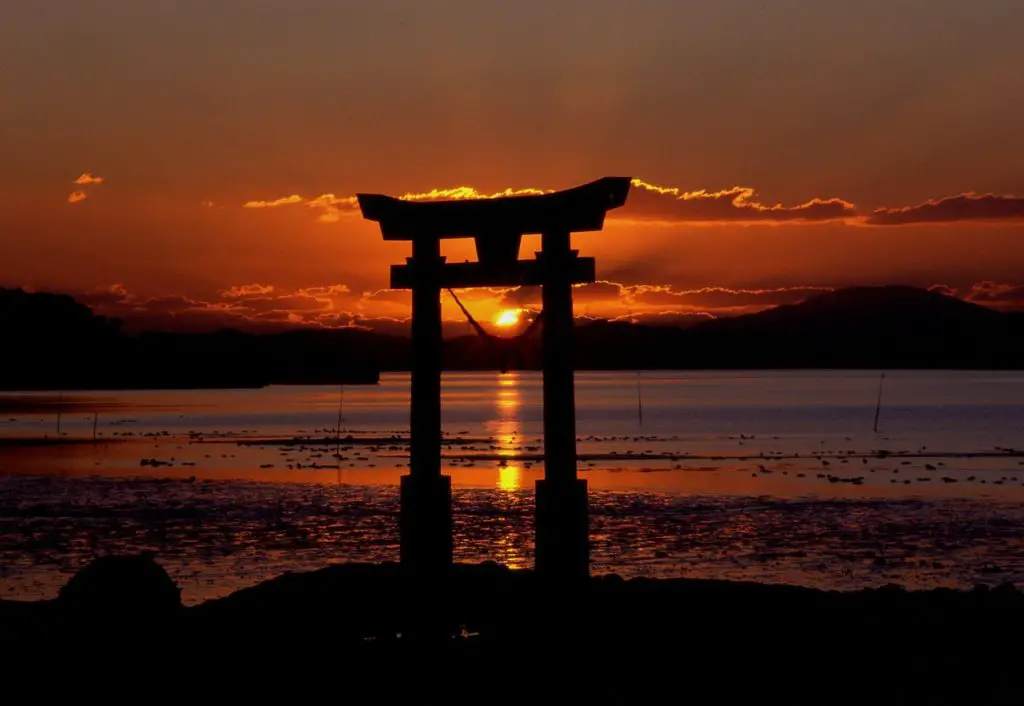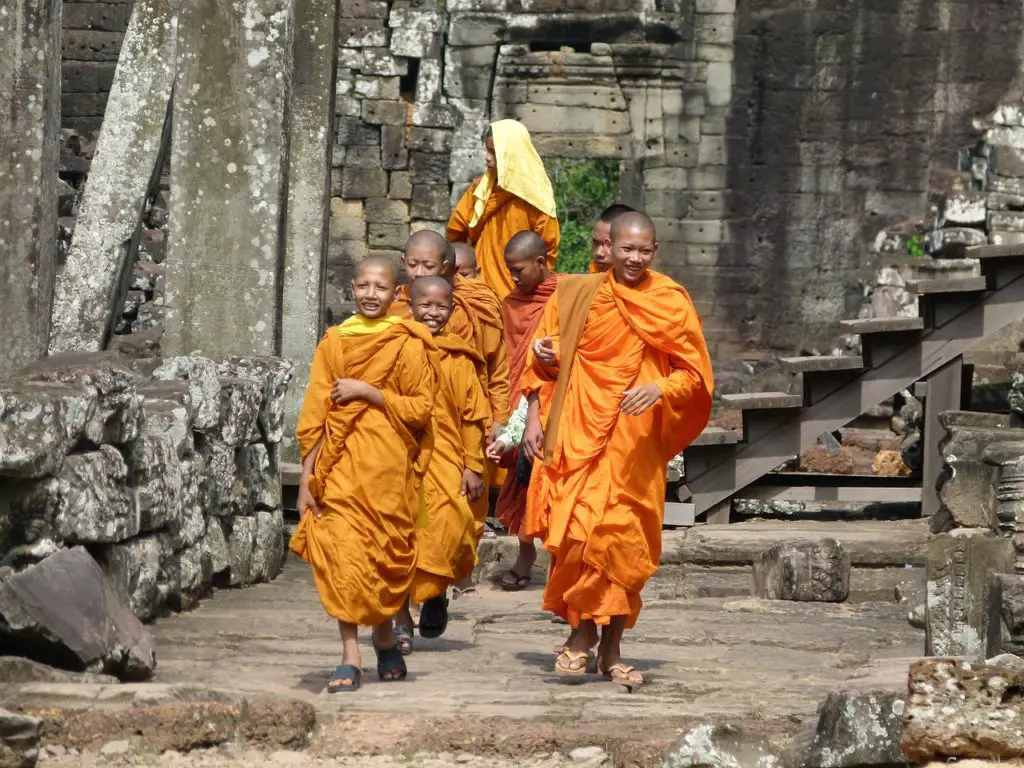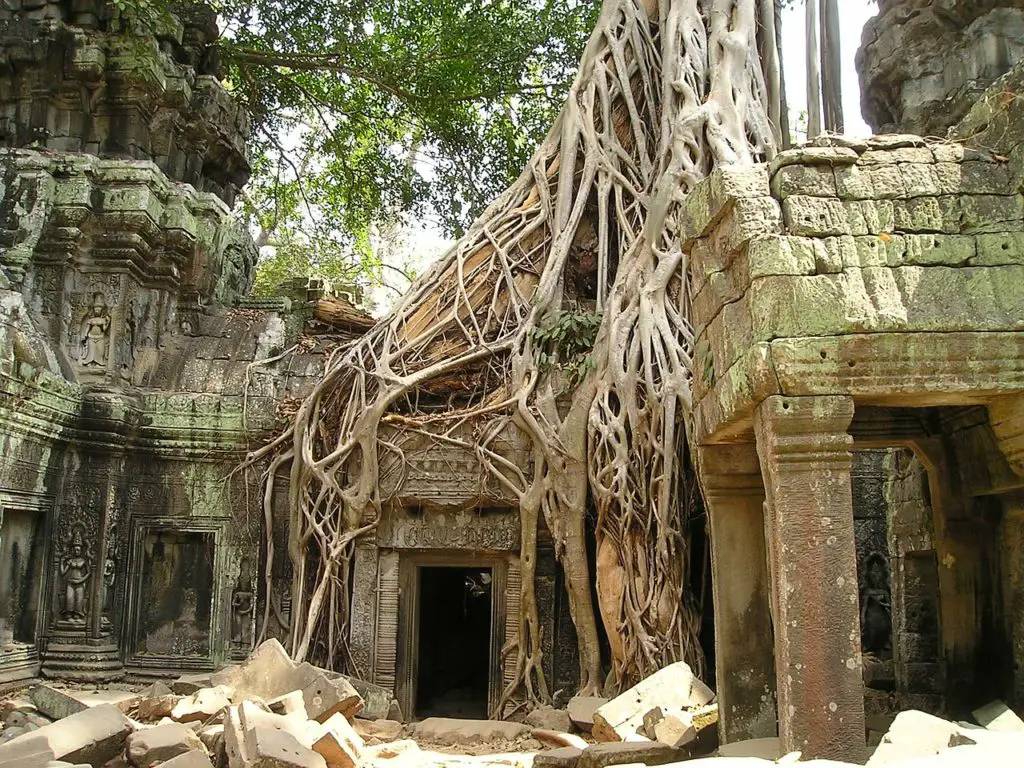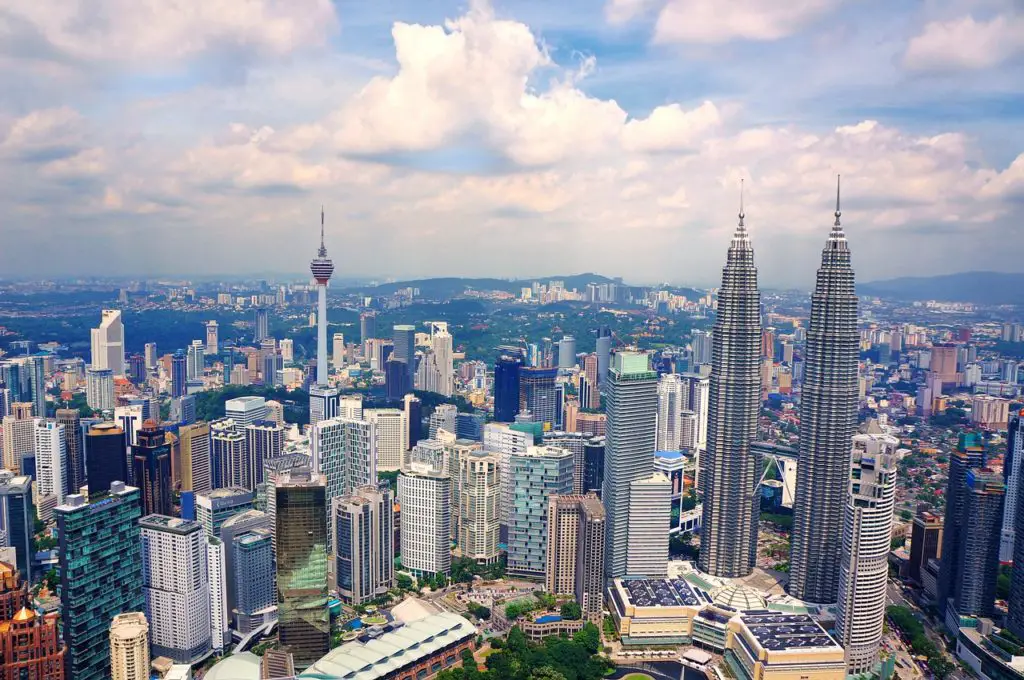The Land of the Rising Sun, Mount Fuji, and Sake, that is Japan. This island nation lies northwest of the Pacific Ocean. With 21 UNESCO World Heritage Sites, it would seem that there isn’t much to do off the beaten track in Japan, right?
Wrong! Japan has many undiscovered places, some of which are totally off the tourist typical tourist trail. Japan is a nation that has successfully fused its modern aspirations and traditional culture.
In this post, we explore the 10 amazing off the beaten track in Japan destinations, the most beautiful sights in Japan, and where are the best cities for first-timers to Japan.
- Where is Japan?
- Where are the 10 off the beaten track in Japan destinations?
- What are the most beautiful parts of Japan?
- Where should I go in Japan for the first time?
- Is Japan worth visiting?
Disclaimer: This post contains affiliate links. This means, if you click on the link and purchase the item, I will earn a small commission at no extra cost to you. Please read my Disclaimer Policy for more information.
Where is Japan?
An island nation that spans 6,582 islands and shares borders and is part of the Ring of Fire. Its five largest islands are Hokkaido, Honshu, Shikoku, Kyushu, and Okinawa. Tokyo’s capital city is Yokohama, Osaka, Kobe, Nagoya, Fukuoku being some of its major cities.
The distinct style of traditional Japanese homes includes tatami mats and sliding doors that separate the individual rooms. Through centuries of political, social, and economical changes, Japanese cuisine is equally famous for its architecture.
Miso soup, sushi, sashimi, tempura, and green tea are cuisines are from Japan. According to the Michelin Star Guide 2019, Tokyo has the highest number of Michelin-starred restaurants at 230 restaurants.
5 Fun Facts About Japan
- Most Populous City. As of 2016, Tokyo is the most populous city in the world with 38,140,000 people. It is no surprise that the United Nations believes that Tokyo will hold that title until the year 2030.
- World’s Oldest Company. The world’s oldest company was from Japan. The company specializes in building Buddhist temples in Japan.
- Power Naps at Work. It is a known fact that the Japanese work the longest hours than any other country. The term inemuri (居眠) refers to a culture of sleeping while being present. It is socially acceptable. And, is a sign of being busy and working hard.
- Earthquakes. Japan is on or close to 4 tectonic plates which makes it a hotbed for earthquakes. There are more than 1,500 earthquakes a year. The deadliest recorded was the 1923 Kanto Earthquake.
- Unique Kit Kat flavors. “Have a break, have a Kit Kat” is a term we are familiar with. The usual flavors found are dark, chocolate, green tea, and cookies and cream. The weird and wacky flavors found in Japan include grilled potato, apple vinegar, and cherry blossom.
Origin of Name
The Record of Ancient Matters explains the creation of Japan in classical Japanese. Classical Japanese combines Chinese characters with Japanese sounds.
This method explains why Japan has 3 major writing systems which are Kanji, Hiragana, and Katakana. Japan is referred to as Oyashima or the “Eight Great Islands.” By the 8th century, Japan is referred to as ‘Wakoku’ (倭国). The Wa were a group of people that the Chinese encountered in southern Japan. During this period, Wakoku became Nihon.
The Land of the Rising Sun
The written Kanji for Nihon (日本) translates to “origin of the sun”. As Japan is located to the east of China, the sun would rise in Japan first.
In The Travels of Marco Polo, the explorer refers to Japan as “Cipangu”. Although he never visited the “islands of Cipangu”, his records changed the course of history, both on land and on the sea.
In Southeast Asia, Portuguese traders brought the old Malay name of Japang, Jepang, and Japun to Europe in the 16th century. A Portuguese letter referred to Japan as Giapan.
Brief History
Japan’s history is divided into four areas that are prehistoric to the classical, the feudal era, and modern Japan.
Prehistoric to Classical
Japan was once inhabited by a diverse group of hunter-gatherers collectively known as the Jōmon period. The people of Jōmon lived a semi-sedentary lifestyle and lived in pits arranged around central open spaces.
A distinct feature of the clay pots was that were made by hand without the aid of a spinning wheel, hence, the cord-markings. The women made these pots by combining clay with mica, fibers, and crushed shells.
China’s Book of Han mentions Japan. And by 552AD, Buddhism is introduced to Japan by Baekje, a Korean kingdom. However, Buddhism only gained acceptance during the Asuka period.
The literary culture began during the Nara period with the completion of Kojiki and Nihon Shoki. The lyrics of Japan’s national anthem, the “Kimigayo” were written during the Heian period.
Feudal Era
The feudal era is characterized by the dominance of a ruling class of warriors, the samurai. China introduced Zen Buddhism which became popular among the samurai class.
A civil war began in 1467 after the Ashikaga shogunate failed to control the feuding warlords. This led to the century-long Sengoku period filled with civil war, social upheaval, and political intrigue.
Portuguese traders reached Japan for the first time in the 16th century and brought commercial and cultural exchange between Japan and the West.
During the Tokugawa period, Japan experienced economic growth with roads and water transportation routes, banking, futures contracts, and insurance brokers for the Osaka rice traders taking shape.
In 1639, the Sakoku policy took effect. This isolationist policy lasted 250 years and closed Japan to the outside world. The reason for closing the borders was to prevent foreign intervention and colonialism, and a complete ban on Christianity in Japan.
During Sakoku, Japan maintained close relationships with its two neighbors, China and Korea.
Modern
Japan opened to the outside world with the signing of the Convention of Kanagawa. A centralized state that was unified by the emperor was formed. This period is known as the Meiji Restoration period.
Japan becomes the most developed nation during the Meiji Era. It is regarded as a highly industrialized nation that pursues military conflict to expand its influence.
On 7th December 1941, Japan carried out a surprise attack on Pearl Harbour, which marked World War II in the Asia Pacific. After the atomic bombings of Hiroshima and Nagasaki in 1945, Japan agreed to an unconditional surrender.
In 2019, the Reiwa era began when Prince Naruhito ascended the throne to become the 126th Emperor of Japan.
Visa Requirements
The Ministry of Foreign Affairs manages the visa applications, the required documents, and the procedure to apply for a visa.
There are three types of visas that are available. These are:
- Short-term Stay visa
- Work or Long-term Stay Visa
- Medical Stay Visa
The visa application process has to be done individually at the Japanese Embassy or Consulate in the applicant’s country. Citizens from 68 countries are exempted from short-term stay visas.
Short-term Stay Visa
Citizens from China, Russia, the Philippines, Vietnam, the Commonwealth of Independent States, and other nationalities require a visa for entry into Japan. The countries are shown on the map below:-
The procedure to apply for a short-term stay visa is shown below:-
Short-term stay visas are issued either as a single entry, double entry, or multiple entries. The cost for a single-entry visa is ¥3,000 ($28) and ¥6,000 ($54) for a double-entry visa and multiple-entry visas. Transit visas are ¥700 ($7).
Work or Long-term Stay Visa
A long-term stay visa is granted to those who come to Japan for work, research, and students. To know more about this visa, read the Work or Long-term Stay page.
Medical Stay Visa
The Medical Stay Visa is to promote Japanese medical services in collaboration with tourism. Here, visas are issued to patients and their accompanying persons. To know more, read the Medical Stay Visa page.
What are the 10 off the beaten track in Japan destinations?
Next, we will explore the 10 off the beaten track in Japan destinations. A map of the location of these places of interest is given.
Mount Koya
The first in our off the beaten track in Japan is Mount Kōya (高野山) or Kōya-san. This mountain was settled by Kūkai or Kōbō Daishi which translates to “The Grand Master Who Propagated the Dharma”.
The temple he founded in 819 still stands and is home to the Shingon School of Buddhism. The temple site sits amidst eight mountain peaks. These peaks resemble a lotus flower, hence the location of the temple.
Mount Kōya is part of the Shikoku Pilgrimage that is associated with Kōbō Daishi. A literal translation of Shikoku means “four provinces” which are Awa, Tosa, Iyo, and Sanuki.
Shikoku Pilgrimage Route
The Shikoku Pilgrimage route is traditionally completed by foot. However, modern pilgrimages complete the 30-60 days route using cars, taxis, buses, bicycles, and motorcycles. The total length of this route is 745 miles.
A pilgrim’s journey to these temples is akin to a symbolic path of enlightenment. The temples represent the idea of awakening, austerity, and discipline, attaining enlightenment, and achieving nirvana.
Other than the 88 official pilgrimage temples, there are another 20 temples that are part of the larger Kumano Kodo Pilgrimage Network. The routes here include the Nakahechi Imperial Route, Ohechi Coastal Route, Kohechi Mountainous Route, and the Iseji Eastern Route.
Read The Magic Mountain, Japan’s Hidden World of Temples, and Overnight On The Sacred Mountain Of Koyasan to know more.
Miho no Matsubara
The second in our off the beaten track in Japan is Miho no Matsubara. This area is a scenic seashore along the Miho Peninsula in Shizuoka City. The area is known for its pine trees that spread over 4.3 miles.
Miho no Matsubara is one of the New Three Views of Japan (Shin Nihon Sankei) along with Lake Ōnuma in Hokkaido and Yabakei Gorge in Kyushu. The three views of Japan are regarded as Japan’s celebrated sites attributed in 1643 to scholar Hayashi Gaho.
The original Three Views of Japan are Matsushima Bay in Miyagi Prefecture, Amanohashidate Sandbar in Kyoto Prefecture, and Itsukushima Shrine on Miyajima Island.
Legend of Miho no Matsubara
Miho no Matsubara the site of the Hagoromo (the “Feathered Robe”) legend based on the traditional swan maiden. The story goes that there was once a celestial being who flew over Miho no Matsubara.
The celestial being was overcome by the beauty of its white sands, clear, and sparkling waters. She decided to take a bath in its waters. She removed her feathered robe and hung it on a pine tree. A fisherman walking along the beach saw her and took her robe.
He refused to return her robe until she performed a heavenly dance for him. She complied with his request as she needed her robe to return to heaven. This legend is celebrated as Takigi Noh. Every year, the dance is performed at the site of an old pine tree.
How To Get Here
Take the Tokaido Shinkasen to Shimizhu Station. From Shimizu Station, the beach and pine groves are 25 minutes away. You can either take a bus or taxi to get to Miho no Matsubara.
Check out the 40 Most Beautiful Places In The World, 15 Stunning Black Sand Beaches Around The World, and Admiring Mount Fuji From a Black Sand Beach to know more.
Matsumoto Castle
The third in our off the beaten track in Japan is Matsumoto Castle. This castle in Nagano Prefecture is Japan’s oldest and most beautiful castle. Matsumoto is one of the Three Famous Castles in Japan.
The castle’s nickname is Karasujo or “Crow Castle” because of its black exterior. This castle was built and was meant to be used as a fortress. This castle is one of Japan’s National Treasures as it is an original relic of the Sengoku and Edo periods in Japan’s history.
Why was Matsumoto Castle built?
Matsumoto Castle was built for war. However, it was never used for war, and ironically, it became a symbol of war. The castle has over 400 weapons that were never used.
This castle boasts several unique features. The first is that it is six stories in height. The extra floor is hidden from the outside view. The second feature is that the stairs are steep. It was made that way to prevent the enemy from climbing up and down the stairs.
The third feature is the two towers of this castle. The first tower was to defend the castle from invaders. And, the second tower was by the elites to view the moon.
How much is the entrance fee to Matsumoto Castle?
The parks and castle grounds are free. There is an entrance fee to enter the castle. Adult tickets are ¥700 ($7) while elementary and high school student tickets are ¥300 ($3).
The fully explore the tower takes about an hour. Please be cautious of the steep stairs at each level of the castle.
Read Behind The Lens: The Crow Castle, the Top 20 Most Popular Castles In Japan, and the 10 Most Beautiful Snow Castles In The World to know more.
Mount Aso
The fourth in our off the beaten track in Japan is Mount Aso. This is possibly Japan’s largest and most active volcano. It is on the island of Kyushu and has a peak of 1,592 meters. There are four peaks within the central cone group of the caldera.
The peaks are Mount Neko, Mount Taka, Mount Naka, Mount Eboshi, and Mount Kishima. Out of these, Mount Naka is the most active or Nakakade. Mount Naka’s crater is 15 miles in length with a milky green lake at its center.
Check out the 5 Hidden Gem Places To Visit In Kyushu and the 8 Stunning Places In Japan That Don’t Look Like Japan to know more.
Arashiyama Bamboo Forest
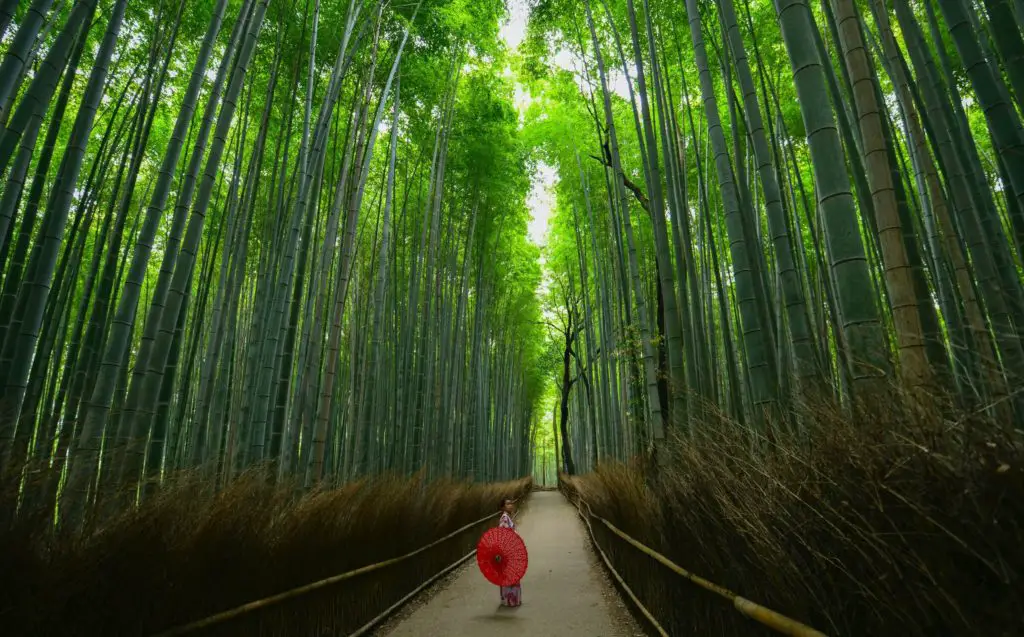
The fifth in our off the beaten track in Japan is Arashiyama Bamboo Forest. This bamboo grove is one of Kyoto’s top sights and for an excellent reason. These tall shoots make you feel as if you are being transported to another land or dimension.
Another name for these groves is Sagano Bamboo Forest. The bamboo forests start at the northern gates of the Tenryu-Ji Temple. The Tenryu-Ji is an attraction in itself and it is best to combine the temple and bamboo groves in one trip.
The entrance fee to access the gardens of the temple is ¥500 ($5) and to access the temple building itself is ¥300 ($3) per person. There is no entrance fee to access the bamboo groves.
Or, you can have a private tour of the Arashiyama Bamboo Grove and Temple as a day trip. This 6-hour walking experience includes tickets to Okochi Sanso Villa and the Iwayatama Monkey Park.
Check out Here’s What It Looks Like, One of the World’s Prettiest Groves, and The Most Beautiful Forests in the World to know more.
Nachi Falls
The sixth in our off the beaten track in Japan is Nachi Falls or Nachi-no-Otaki. These falls are the highest waterfalls in Japan. With a width of 13 meters and a single uninterrupted drop of 133 meters, is also home to the Kumano Nachi Taisha Shrine, which is also a UNESCO World Heritage Site.
There is no entrance fee to access the shrine grounds. However, to access the fall viewpoint, an entry fee of ¥300 ($3) for adults and ¥200 ($2) for children.
In this shrine, Buddhism and Shintoism exist in harmony. The temple is known for its pagoda that is set against the waterfalls. The entrance fee to access this pagoda is ¥300 ($3).
Travel Tips:
- Make sure to visit the Hiro Shrine at the foot of the waterfall.
- Take the 30-minute hike up to the Kumano Nachi Taisha. Pay the entry fee to view the amazing waterfalls.
- Don’t forget to bring a pair of non-slippery shoes as this place is always wet.
How do I get to Nachi Falls?
You can take the bus either from Ki-Katsuura Station or Nachi Station. A one-way ride from Ki-Katsuura Station takes 30 minutes and costs ¥630 ($6). A one-way ride from Nachi Station takes 20 minutes and costs ¥490 ($5).
For those who prefer to hike up to the falls, you can get off at the Daimonzaka Bus Stop which is at the base of the Daimonzaka Trail. This trail is like traveling back in time, as you walk the paths that were once taken by monks on their pilgrimage to these temples.
If you are arriving by car, you can park at the parking lot of Seiganto-Ji Temple and make your way to the temples and waterfalls.
How far is Nachi Falls from Tokyo?
Nachi Falls is 260 miles from Tokyo. Check out Rome to Rio on the 8 ways to get there.
Read Wakayama: The Land of the Gods, Hiking Kumano Kodo, and 20 Mythical Sites So Legendary They’re Worth Planning A Trip To Japan to know more.
Lake Biwa
The seventh in our off the beaten track in Japan is Lake Biwa. This lake is Japan’s largest freshwater lake located in Shiga Prefecture. Lake Biwa is one of 20 ancient lakes in the world that have existed for more than 1 million years.
The lake is named Biwa after the traditional Japanese lute. For a breathtaking birds-eye view of the lake, walk up the Biwako Terrace.
To get to Biwako Terrace, you must first take the ropeway at the foot of Biwako Valley. The ropeway is the fastest in Japan as it takes 5 minutes to reach the height of 1,100 meters during the winter months. The speed is reduced in the spring and autumn months.
The costs for the ropeway are ¥2500 ($23) for adults, ¥1000 ($9) for elementary school children, and ¥600 ($6) for those above 3 years old.
Travel Tips
- Make sure to snap an Instagram-worthy photo of the torii gate of Shirahige Shrine.
- You can swim around the lake. You can also rent canoes, kayaks, and paddleboards around the lake.
- Head to Omimaiko Beach for a summer getaway. The palm fringed white sand beach is on the west end of the lake.
Kanmangafuchi Abyss
The eighth in our off the beaten track in Japan is Kanmangafuchi Abyss. The abyss formed when lava flowed through the valley. This resulted in an extraordinary landscape and a pleasant walking trail.
Kanmangafuchi is off the beaten track in Japan. It is these Jizō statues that make the trip here worth it. According to local myths, Jizō is Japan’s Boddhisattva who cares for travelers, lost souls, and is a guardian of children. The Jizō here is Narabi Jizō that translates to “Jizō in a line”.
Another term used here is bake Jizō or “ghost Jizō”. The statues would disappear and change their location as a form of trickery. Hence, the locals believe that you will never count the same number of Jizō statues twice when walking along the path.
Read Jizō: Protector of the Kanmangafuchi Abyss and Japan Off The Beaten Path: Kanmangafuchi Abyss to know more.
Shiratani Unsuikyo Forest
The ninth in our off the beaten track in Japan is the Shiratani Unsuikyo Forest or the “Princess Mononoke Forest”. This forest is in the Shiratani Unsuikyo Ravine on Yakushima Island.
The forests were an inspiration to Oga Kazuo who spent many hours in the forest recreating scenes for Studio Ghibli’s, Princess Mononoke anime.
Shiratani Unsuikyo has a mystical vibe, with its green moss over smoothened rocks and the sounds of flowing water dotted with ancient cedar trees. You might believe that time has stood still here.
How To Get To Yakushima Island
There are two ways to get here. The first is by plane and the second is by ferry.
By Plane
There are direct flights from Osaka and Fukuoka to Yakushima once a day. There are 5 flights a day from Kagoshima to Yakushima. The flight from Osaka takes 90 minutes and the flight from Fukuoka takes 65 minutes. The flight from Kagoshima takes 30 minutes.
By Ferry
Two ferries ply the Kagoshima to the Yakushima route. The ferries are the Toppy Jetfoil, the Yakushima 2 Ferry, and the Hibiscus Overnight Freight Ferry. The Toppy Jetfoil is the fastest way to reach the island as there are at least 8 trips daily.
The costs of Toppy Jetfoil are ¥8400 ($75) one way and the journey takes 2 hours. For the Yakushima 2 Ferry, the travel time is about 4.5 hours and costs ¥4900 ($44) one way.
The Hibiscus Overnight Freight Ferry is the cheapest as it costs ¥3600 ($32) one way and takes about 13 hours to reach Yakushima. If you have wanted to know what it’s like to stay on board a freight ferry, then this is for you. Bring your food as only cup noodles and a vending machine is onboard. ,
How To Get To Shiratani Unsuikyo Forest
This ravine is a 30-minute journey from Miyanoura Port by car. Buses are available, but the service is infrequent with one bus every 1-2 hours for a short 35-minute journey.
Ishigaki Island
The tenth and last in our off the beaten track in Japan is Ishigaki Island. Ishigaki or Ishigaki-Jima is southwest of Okinawa and is the second-largest island in the Yaeyama Group of Islands.
Ishigaki has several beaches that are suitable for swimming, snorkeling, and diving. Kayaking is the best way to explore the island’s rivers. Ishigaki is the Island of Raining Stars.
People have been observing the stars for the past 300 years. The movement of stars was essential as people grew wheat and millet based on the stars.
How do I get to Ishigaki Island?
You get to Ishigaki Island from Naha Airport to the New Ishigaki Airport. The journey takes about an hour and the airlines that ply that route are All Nippon Airways, Japan Transocean Air, and Solaseed Air.
Direct flights are available from Hong Kong and Taiwan. The journey from Taiwan takes about an hour and from Hong Kong takes about 2 hours.
There are direct flights available from Tokyo, Osaka, Nagoya, and Fukuoka. The journey varies between 2 to 3 hours flight times.
When should I go to Ishigaki?
Ishigaki is a year-round destination. The winter months are between January and February and are an ideal time for hiking or walking. February is the start of the cherry blossom month.
Spring begins in March with warm weather and cold winds. There will be more sunny days during March and April.
There will be a short rainy season in May before summer starts in June. During these months, always carry an umbrella for the occasional downpour.
Summer continues through July to October with hot sunny days. These months are also typhoon months with September being the peak month for typhoons.
By November, autumn sets in with most beaches closing by mid-December. These months are chilly with strong winds. There are also fewer tourists during these months.
Check out the 8 Reasons Why You Should Visit Ishigaki and A Natural Japan That Few Tourists See to know more.
What is the most beautiful part of Japan?
There are many beautiful places in Japan. In this post, we look at the best five beautiful sights in Japan.
Sensō-Ji Temple
The first of our most beautiful parts of Japan is the Sensō-Ji or Kinryū-Zan Sensō-Ji temple. This temple is not off the beaten track in Japan and sees hordes of tourists daily.
This temple is the oldest in Japan. And, is dedicated to the Goddess of Mercy, Kuan Yin. According to local legend, two fishermen’s brothers fished out the statue of the Goddess of Mercy, Kuan Yin in 628 AD.
How much does it cost to go to Sensō-Ji?
There is no entrance fee to enter this temple. The temple grounds are open all year round from 6.00 am to 5.30 pm and 6.30 pm from October to March.
How is the layout like?
The first sight visitors will see is the Kaminari-mon Gate which takes you through Nakamise Shopping Street. At the end of this street, you arrive at the Hozo-mon Gate. Keep walking straight until you reach the Kannondo Hall which is the main hall. The Boddhisattva is at a small temple within the inner sanctum.
Check out The Temple Devoted To Mercy, The Complete Guide To Senso-Ji Temple, and The Most Visited Sacred Sites to know more.
Takeda Castle Ruins
The second of our most beautiful parts and off the beaten track in Japan is the Takeda Castle Ruins. This is Japan’s “floating castle in the sky” and “Japan’s Machu Pichu”.
The best time to visit this castle is from October to December where you can experience this castle floating in the clouds. Be sure to arrive early as the mists dissipate a few hours after sunrise. At 353 meters above sea level, the fortress gives a commanding, unhindered view of the mountains and valleys.
A popular viewing spot is on Rinsuunkyo which is on the mountain slopes opposite the castle. The best viewpoints are Viewpoint 1 and Viewpoint 2 which are about a 30-40 minutes hike up the trail.
How do I get to Takeda Castle?
There are two steep trails located behind Takeda Station. The trails become slippery after the rains. Hence, bring a good set of non-slip hiking shoes. There is an entrance fee of ¥500 ($4.50) to access the ruins.
Check out Takeda Castle Ruins In Hyogo Looks Like Ghibli’s ‘Castle In The Sky’, Japan’s Fortress In The Clouds, and Crazy Gorgeous Things To See In Japan That Aren’t Cherry Blossoms to know more.
Kabira Bay
The third of our most beautiful parts and off the beaten track in Japan is Kabira Bay or Kabira Wan. This bay is on Okinawa Prefecture on Ishigaki Island. There are two places where Japanese black pearls are cultivated. It is on Kabira Bay and Iriomote Island.
Hence, swimming is not allowed on this beach. The only way to view the corals and tropical fishes are via a glass-bottom boat. These boats operate from 9.00 am to 5.00 pm and charge ¥1000 ($9) for adults and ¥520 ($5) for children.
Another activity is on this island is island-hopping to the uninhibited islands around Kabira Bay. The tours cost around ¥3,500 ($32) for adults and ¥2,000 ($18) for children. These tours usually last about 3 hours.
Another activity here is kayaking around the uninhabited islands. There are kayaking and snorkeling tours available. The costs can come up to ¥8,000 ($72) for adults and ¥6,000 ($54) for children.
Check out the 8 of the Most Beautiful Islands To Visit In Japan, the 6 Destinations In Japan That The Locals Love To Go, and Ishigaki, A Japanese Natural Wonderland to know more.
Biei Blue Pond
The fourth of our most beautiful parts and off the beaten track in Japan is Biei Blue Pond. Another name for this beautiful man-made pond is Shirogane Blue Pond. The pond is located in Biei in Hokkaido.
To stop volcanic mud from reaching the town of Biei, a dam was built. The by-product of that dam is this pond. This pond is on Apple’s Macintosh desktop wallpaper.
Can you swim in the Biei Blue Pond?
No, the blue color is the result of colloidal aluminum hydroxide.
The Biei Blue Pond has received an Honorable Mention in National Geographic’s Photo Contest and is on the 40 Seemingly Impossible Places That Exist.
Itsukushima Shrine
The last in our most beautiful parts and off the beaten track in Japan is Itsukushima Shrine or Itsukushima-jinja. Saeki Kuramoto built this shrine and dedicated it to the Goddesses’ of the seas and storms. The literal translation of Itsukushima is the “Island of the Gods”.
The most recognizable feature of this shrine is its red torii gate that seems to float on the water during high tide. Because this is a sacred island, there are no cemeteries or hospitals here.
Is Japan worth visiting?
Yes! Japan is famous for its public transportation system. The country is one of the cleanest in the world and its pride is its people, who are friendly, polite, and helpful to tourists.
Japan has an estimated 100 castles, each unique in architecture and reflects fascinating family legacies defined by their interiors and facade. Check out the Top 10 Most Beautiful Castles In Japan and the Top 12 Oldest Castles In Japan to know more.
Japan is also famous for its cuisine. There is more to it than sushi, sashimi, and tempura. Check out The 10 Best Traditional Japanese Foods and Dishes to know more.
RELATED:
Off the Beaten Path Italy: An Epic Experience
